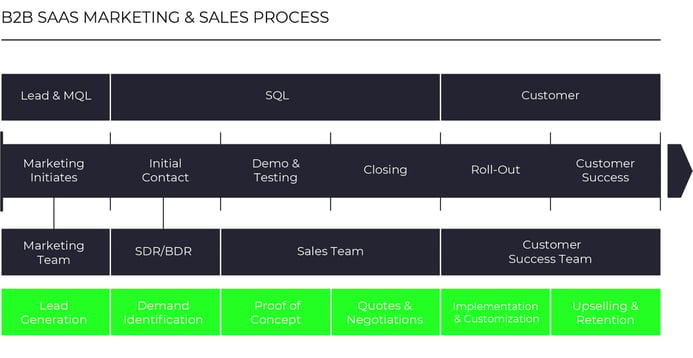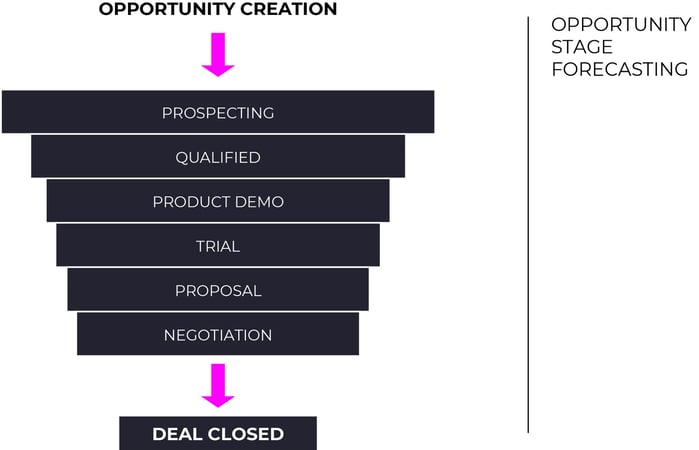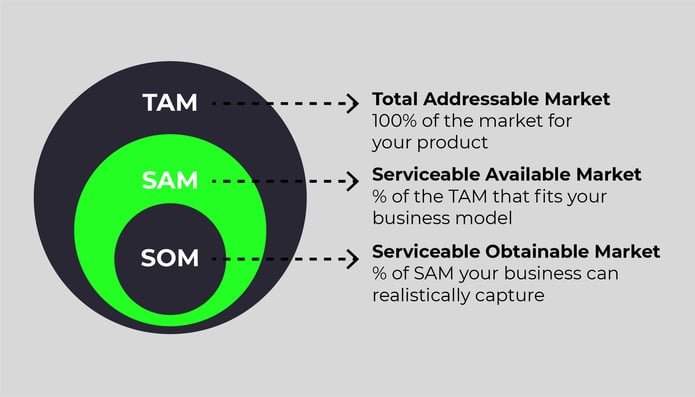The Software as a Service (SaaS) industry has grown tremendously over the last few years. Customers prefer a blend of subscription and usage-based pricing, which allows them flexibility, control, and transparency to adjust to changing needs and circumstances. It's also well-liked by businesses, as it provides them the opportunity to scale their business and remain competitive with new and ever-changing product offerings and modes of monetization.
Table of Contents
-
What is a SaaS revenue forecast?
-
Types of Revenues in SaaS Businesses
-
SaaS Forecast Categories
-
SaaS Sales Forecasting Checklist
-
Types of Forecasting Strategies
-
Best Practices for SaaS revenue forecast
-
5 common mistakes to avoid in forecasting
SaaS provides a recurring revenue stream to businesses, which makes it quite favorable with respect to valuations and predictability. However, it can be difficult to accurately forecast cash flows for SaaS businesses due to the varying nature and the different types of pricing and billing approaches often used in SaaS business models.
SaaS companies need to be able to correctly forecast their growth for several reasons. Usually, these are startups that often face the pressure of showing a rapid growth rate to investors in order to secure the next round of funding. So in this bid to please the investors SaaS businesses often overestimate how quickly they can grow, resulting in missed sales targets. Continuous inability to meet targets makes investors lose confidence in management which may lead to a complete management overhaul. Also, the odds are stacked against them unless they grow exponentially, as software companies with a growth rate of 20% or lower, have a 92% chance of failing in the next few years.
Therefore, accurate revenue forecasting is a critical task for a software company as it helps decision-makers to correctly allocate financial budgets, adjust priorities, and set revenue and sales goals for the next year. But it's more difficult to predict revenue for SaaS companies, as unlike traditional revenue models payments are not made upfront and customer lifetime value is not always realized at the outset, which makes it harder to predict revenue and customer lifetime value. SaaS businesses monitor different revenue streams including new purchases, recurring revenue, upgrades, and much more. Except for new purchases, all the other revenue streams often depend on the customer’s experience using the product, and the relationship developed with them which are unpredictable aspects for SaaS companies.

What is a SaaS revenue forecast?
A SaaS revenue forecast is an estimate of the total revenue the business will generate monthly over a certain period. SaaS companies track their growth by analyzing their monthly recurring revenue (MRR).
Monthly Recurring Revenue (MRR) is the most important metric and serves as the foundation for SaaS revenue forecasting. Tracking the MRR allows SaaS businesses to understand whether the revenue is growing, declining, or at a standstill. Keeping track of this trend helps the business owners make sales predictions and make budget adjustments accordingly. It's also an important metric for investors, as it allows them to forecast the predictive revenue stream.
Annual recurring revenue (ARR) is also a determining factor for revenue forecasting as it is dependent on the net new customers acquired and the retention of existing customers.
For a B2B SaaS business forecasting answers several questions like - Are they going to meet their business objectives? Do they need more cash? Are they able to hire new employees? Etc.
There are several factors that are considered while creating a revenue forecast model which include - market conditions, sales pipeline, past financial performances, etc.
Types of Revenues in SaaS Businesses
Unlike traditional companies that forecast their sales, SaaS companies forecast revenues. This is due to the fact that in the case of a SaaS company when a customer starts a subscription, the new subscription booking is accounted for once the contract is complete. There are also several other professional services that create revenue for the SaaS business. Another way that a SaaS business earns revenue is through contract renewals and upsell revenue. Therefore, the revenue sources that need to be incorporated into revenue projections are:
- Revenues from existing contracts
- Revenue from new bookings
- Renewal Revenue
- Upsell Revenue
- Service Revenue
Revenue from existing contracts
This is the revenue generated from existing customers. Each existing contract has a revenue schedule that includes fees for subscriptions and usage, as well as other professional services. This growth vector typically lies with more of a customer success function, especially in scenarios based on a Usage-Based Pricing model (Hint: this can be a massive driver of growth).
New Bookings
Booking is an important metric for SaaS businesses, especially startups. It represents the portions of bookings that come from net new customers that have just signed up for your SaaS services. It is the value of a new contract or subscription signed for a given period. If the payment from the new bookings is collected at the beginning of the contract, it is treated as a liability and is called deferred revenue.
Renewal Revenue
Renewal revenue is generated from renewal bookings which is the portion of the bookings attributed to existing customers, whose contracts are up for renewal. The renewal bookings are usually calculated at the time of the effective renewal date or when a renewal request is received.
Upsell Revenue
An upsell is when you sell upgrades or additional services or licenses to your existing customers. Upsells are a critical component of SaaS revenue. Upsells are also good for customer retention and show that you have satisfied customers that get value out of your services.
Service Revenue
This is the revenue derived from providing professional services, consulting, implementation and onboarding, product customization, etc. This revenue is generated after the deal is signed. More and more SaaS businesses are finding creative ways to monetize their services via a recurring licensing model in order to maximize enterprise valuation.
SaaS Forecast Categories
SaaS businesses suffer from issues like lack of quantifiable data, as the last year’s results cannot be treated as a yardstick to gauge next year’s results. To combat this issue, software businesses depend on expert opinion. However, there are some basic forecast strategies that SaaS companies can follow. Instead of forecasting based on the sales stage, a sales leader can work off a common set of definitions based on something called the opportunity confidence categories. Confidence categories relate to the probability of an opportunity closing at a certain time and its predicted value. Following are the common opportunity confidence categories :
- Won: These are the opportunities or deals that have been closed and orders are already processed.
- Committed: These are sometimes also called confident. These are the opportunities in which the sales teams are actively engaged in conversations with the prospects and they are highly confident that these will close by the end of the quarter.
- Probable: These are the hopeful opportunities that the sales teams expect to close at the end of the quarter. These are probable opportunities because the sales teams are confident that they would be able to win these opportunities after implementing their set strategies and plans.
- Pipeline: These are opportunities with projected close dates beyond the current quarter. These shouldn’t be included in the base forecast but it’s important to track these deals as they may turn into a probable opportunity in the future.
- Omitted: These are deals that are no longer live and shouldn’t be included in the forecast as they may either be lost or lapsed.
- Lost: These are the deals that are lost i.e. the prospect is no longer considering your company.
SaaS Sales Forecasting Checklist
Now that we have an understanding of what revenue forecasting is and some of the definitions around it, let’s look at the steps to incorporate successful revenue forecasting.
- Gather all necessary data. Make sure it exists in a centralized system where it can be accessed by all necessary personnel
- Make sure you have a structured sales cycle with clear definitions and goals
- Analyze the gathered data and look at the opportunities in your pipeline and deals already won.
- Make sure you take into account all the internal and external factors that impact your forecasts
- Understand that there will be some blind spots in the forecast as it is impossible to consider all the factors and scenarios that might affect your revenue
- Don’t forget to tweak your forecasts as circumstances change
Types of Forecasting Strategies
There are different forecast methods to choose from depending on the information a business has, their current growth stage, and the results they are looking for.
Lead-driven forecasting
In lead-driven forecasting, the leads are analyzed and evaluated based on how similar leads have interacted with the business in the past, and forecasting is based on the analysis. This forecasting strategy is ideal for businesses with a steady stream of inbound leads and enough historical data to make a prediction. It can be calculated with the following formula: # of sales qualified leads x conversion ratio x average size of deal = forecasted booking revenues from new customers.
Since this method relies heavily on historical data it is susceptible to variances due to changing marketing efforts or sales cycles. Lead-driven forecasting relies on the data from the following metrics:
- Leads per month from the previous sales cycle
- Lead to customer conversion rate by source
- Average sales price by source
Length of sales cycle forecasting
This method uses data to predict how long a lead typically takes to convert to a customer. It also helps to understand a sales rep’s sales per period. To give an example, if the average time to close a deal for a sales rep is four months, and the sales rep has been working on a prospect for 2 months, then the deal is likely to close in 2 additional months. While this method is beneficial for estimating at the highest level when a deal is likely to close, it loses marks on accuracy.
This forecasting method can be applied to different sales cycles depending on the source and adjusted accordingly. Meaning each lead can be analyzed and grouped based on the source to give a more accurate picture, be it a referral client, inbound lead, or a trade show lead. Therefore, this is a suitable forecasting method for teams where the sales and marketing teams are tightly integrated, and every lead source is accurately tracked by sales.
Opportunity stage forecasting
In this method, we look at which stage the prospects are in the pipeline and forecast the chances of closing the deal. Usually, the pipeline can be broken down into several stages like
- prospecting
- qualifying
- demo or meeting
- proposal
- negotiating
- closing
The further along the sales pipeline a lead is, the more likely they are to become a successful deal. This means that a new prospect might have a 10% closing rate, compared to someone who is at a demo or meeting stage that might have a 50% close rate.

One limitation of this method is that it doesn't consider how long a lead has been in one particular stage. Therefore, someone who is at the demo stage for a week is assigned the same close rate as someone in this stage for more than a month. So, it is important to keep the pipeline up to date to get an accurate forecast.
Historical forecasting
As the name suggests, historical forecasting takes into account the historical sales data, customer usage patterns, AR history and makes calculated assumptions on how much the business will grow each year. Full benefit from this method requires an understanding of how each customer is using your product or service. So per this method, if the Monthly Recurring Revenue (MRR) in March was $30,000, then it is assumed that the MRR for April will be at least $30,000. The projected growth rate, minus projected churn can be added to provide a reasonable forecast.
Historical forecasting can be even better if you have access to the right historical usage data, which can enrich forecasts about customers’ future usage. An agile billing system should provide accurate usage data from which historical forecasts will be more accurate.
However, this method by itself doesn’t consider changing market conditions, uncertainties, seasonality, etc. which may hinder an accurate forecast. This is especially true considering the uncertainties all businesses faced and continue to face after the COVID-19 pandemic hit. However, the need to understand how your customers are using and perceiving value from your product or service in near real-time is more valuable now than ever.
Multivariable analysis forecasting
The multivariable analysis forecasting method uses predictive analysis and combines the best parts of the previous forecasting methods like sales cycle length, individual rep performance, probability of closing a deal based on the opportunity type or stage, to form an analytics-driven system.
As this method uses the best techniques from all forecasting methods it is the most sophisticated and accurate forecasting method. However, it is also quite expensive due to this reason as it requires an advanced analytics setup which may not fit into the budget for a startup or a small business. This method also requires the sales teams to accurately track the leads and the progress of their deals.
Which Sales Forecasting method is accurate for you?
Whether you are a startup, small business, or an enterprise, you require accurate sales and revenue forecasts to make important decisions for your business. The forecasting method you choose depends on various factors like the size of your business, business model, size of your sales team, and the quality of data to which you have access.
Best Practices for SaaS revenue forecast
Now that you have a fair idea about the different types of SaaS revenue and forecasting strategies let's look at the best practices for SaaS revenue forecast.
- The most important practice in ensuring a good forecast is maintaining accurate data, so ensure that you are keeping accurate records.
- Analyze past performance (if available) before making any future forecasts. Historical data can be a good indicator of future performance. The most important data is the previous year’s annual recurring revenue (ARR) and usage which will help you predict how it may affect the next year’s ARR.
- Integrate forecasting with management practices so that it is easier to fit them into existing sales cycles.
- Don’t just focus on the “closed won” deals, track the complete opportunities funnel to ascertain why and where you are with certain prospects.
- Track lost deals and identify the reasons for them being “closed/lost” and integrate those insights into your forecasting process as well as your sales playbook.
- Keep track of your sales pipeline, as it will help you identify how much revenue you expect to generate over and above your existing ARR. (Hint: Often there are lengthy deployment cycles for Enterprise SaaS deals that can introduce significant delays into both the revenue and cash.)
- Incentivize sales forecast accuracy by providing variable sales bonuses.
- Analyze the sales and marketing performance. If you have an in-depth understanding of their performance and the current status of their targets you will be able to make a more accurate forecast.
- Pay attention to the market trends, economic conditions like downturns or upturns that may impact your forecasts
- Analyze your ARR with churn rate for the previous year. This will give you an idea of how the churn rate affects your future revenues. The overall revenue from contract renewals needs to be adjusted with the churn rate to arrive at a more precise estimate.
5 common mistakes to avoid in forecasting
1. Incorrect assumptions
It is critical to do exhaustive market research regarding your product/service offerings and the current market trends. If you fail to do so there’s a chance that you may over-or underestimate your forecasts.
2. Overlooking Sales History
Past sales performance is usually a good indicator of future sales. Unless you are a new startup and do not have the past sales history in hand there is no reason to ignore the previous years’ performances as it helps you gain valuable insights on sales, conversion rate, and customer buying patterns.
3. Overestimating revenue and underestimating costs
If you are a SaaS founder you are sure to be highly optimistic about your product and the value it would provide to your customers. However, it's crucial to ascertain the market share of your offering. Often SaaS businesses overestimate their predicted market share even if the product may be meant for a niche market. By overestimating the market share you also end up overvaluing your predicted revenue.

To avoid this issue many SaaS businesses follow the TAM SAM SOM model to understand the business’s relationship to market size, and also to figure out their niche market. TAM or total available market is the maximum revenue a business can generate if 100% market share is achieved. SAM or serviceable available market represents the geographic market that your business can service out of the total addressable market. Lastly, SOM or service obtainable market is the niche market of customers that you can realistically expect to capture in a reasonable time. SOM is the most useful for businesses to determine short-term growth targets.
On the other hand, SaaS businesses often underestimate costs and put arbitrary numbers to project expenses. Guesswork should be removed when deciding on operational expenses and costs should be allocated based on the projected growth.
4. Failure to align key metrics
The sales teams and senior management need to be on the same page when it comes to deciding the key sales metrics or else different teams may end up measuring different metrics which results in flawed forecasts. It is important that there is no misalignment in the metrics and forecasts are prepared with a close eye on key metrics and provide an opportunity to revisit assumptions around lifetime values, and the cost to acquire customers.
5. Not utilizing finance models
There are several financial model formats available for SaaS businesses, each of them unique and compatible with certain types of business. However, many companies just use the concept of financial models in its most generic form as a tool to keep the investors happy.
As the SaaS B2B market continues to grow, the potential for predicted revenue will grow too. We understand that it is difficult to precisely predict revenues due to sudden changes in the market and economy. For SaaS businesses, it becomes even more difficult to make accurate predictions as they deal with new services and emerging markets with very little historical data to rely on.
Getting revenue projections right is vital for both small and large businesses, as a lot of decisions are intertwined with revenue forecasts. We hope you found this guide helpful and are closer to understanding revenue forecasts and how they can help manage your business and better understand its dynamics. Contact one of our experts at LogiSense today to talk about your unique billing and usage forecasting needs.
About the Author
Ryan Susanna /
Ryan is a seasoned telecommunications expert with a broad background in both the service provider and software vendor sides of the business. Ryan is currently responsible for worldwide sales at LogiSense. During his tenure, Ryan has held executive level positions including Senior Sales Executive, and Director of Sales. In these roles, he has provided strategic sales, product, and market guidance for our next generation IP service management solutions.
